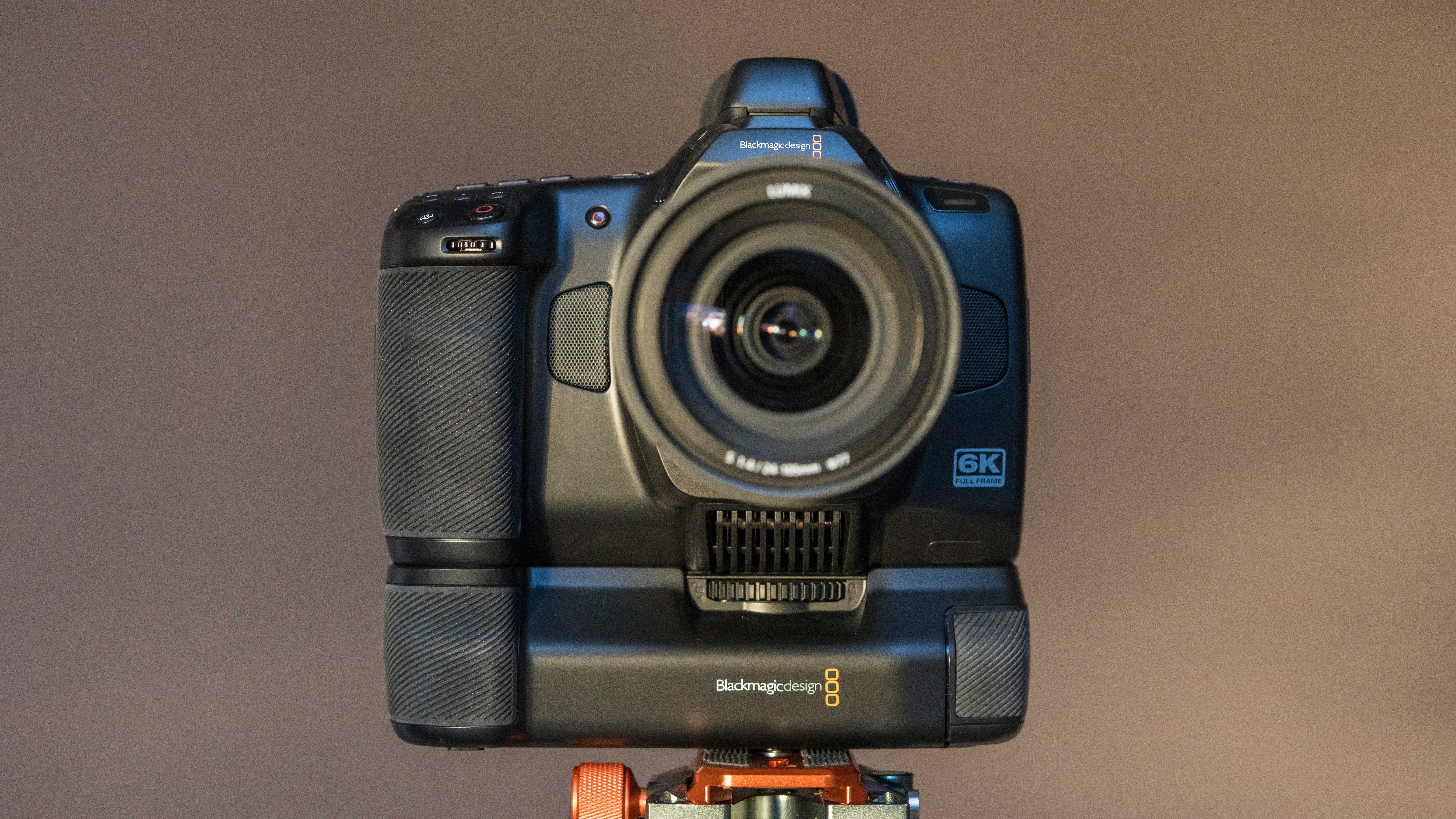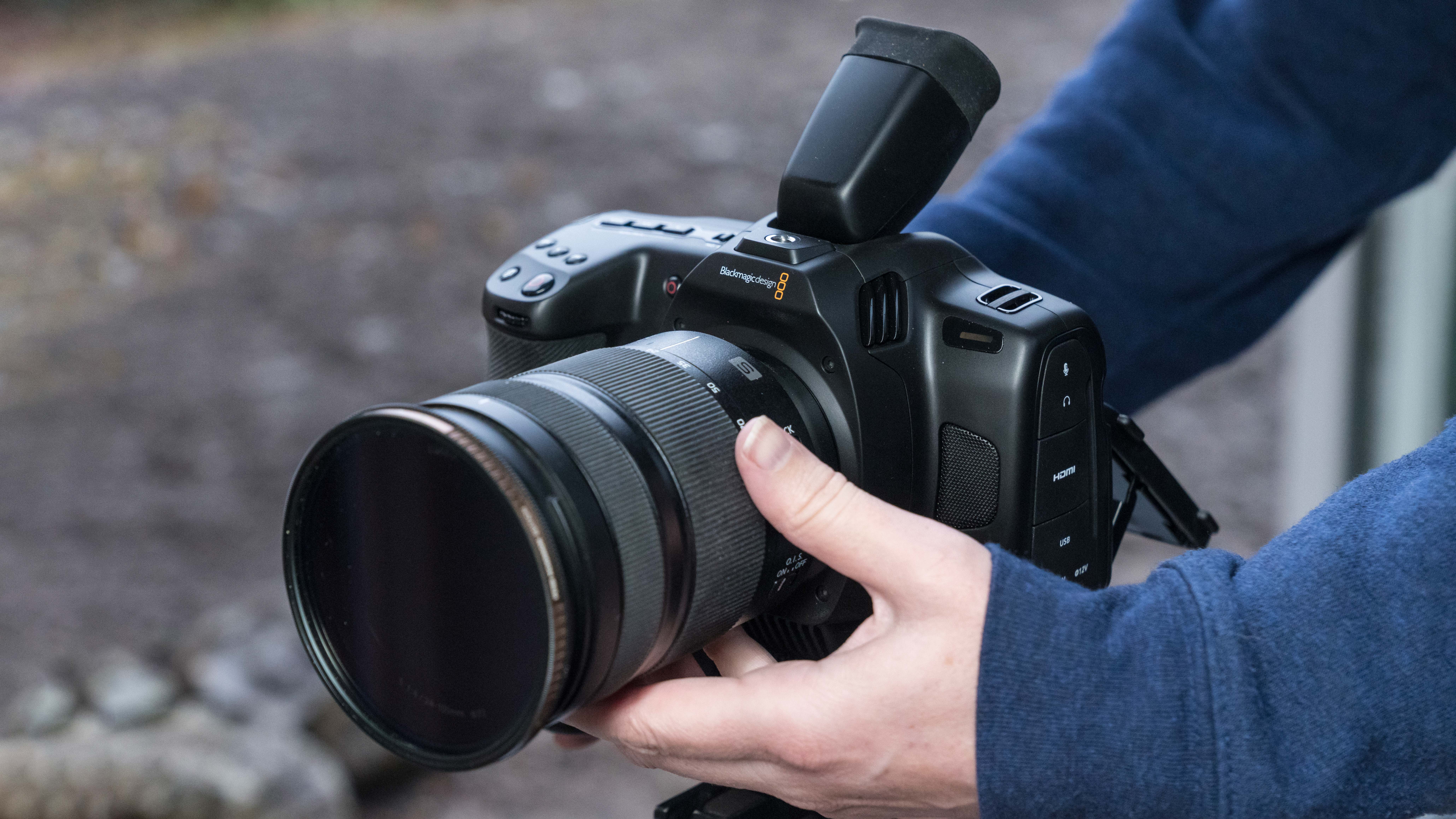
Finally, Blackmagic has gone full frame with the Cinema Camera 6K and dropped the name ‘Pocket’ which was always a misnomer as the camera is simply huge – as were the crop-sensor versions that came before it.
It’s also the third lens mount as the original Pocket Camera used a Micro Four Thirds sensor and matching lenses, which was then upgraded to an APS-C – called Super35 by filmmakers – then a Canon EF mount fitted in the 6K Pro version. Now it’s gone full-frame 6K and there’s a Leica L mount.
Not everyone has lots of these L-Mount lenses, but it means the camera can use an adapter to accept popular glass that cinematographers often use, like Arri PL/ LPL or Canon EF.
You could consider it as the successor to the Pocket Cinema Camera 6K Pro but fitted with a larger sensor. In some ways, it is a serious upgrade which includes the addition of an Optical Low Pass Filter to combat moire. But in other ways, some of the spec has been downgraded. The built-in ND filters have been dropped, and also absent are the twin card slots of the 6K Pro – one for CFast cards and one SD. These are replaced by a single CFexpress type B card, although you can record to an external SSD via the USB-C port, as long as you’re not using the port to trickle charge the camera.
But the biggie is that the new 6K camera can only record in Blackmagic’s own Raw format – or BRAW for short. The 6K Pro also offered ProRes in C4K, 4K, or FHD which meant you have an edit-ready codec that needs no conversion.
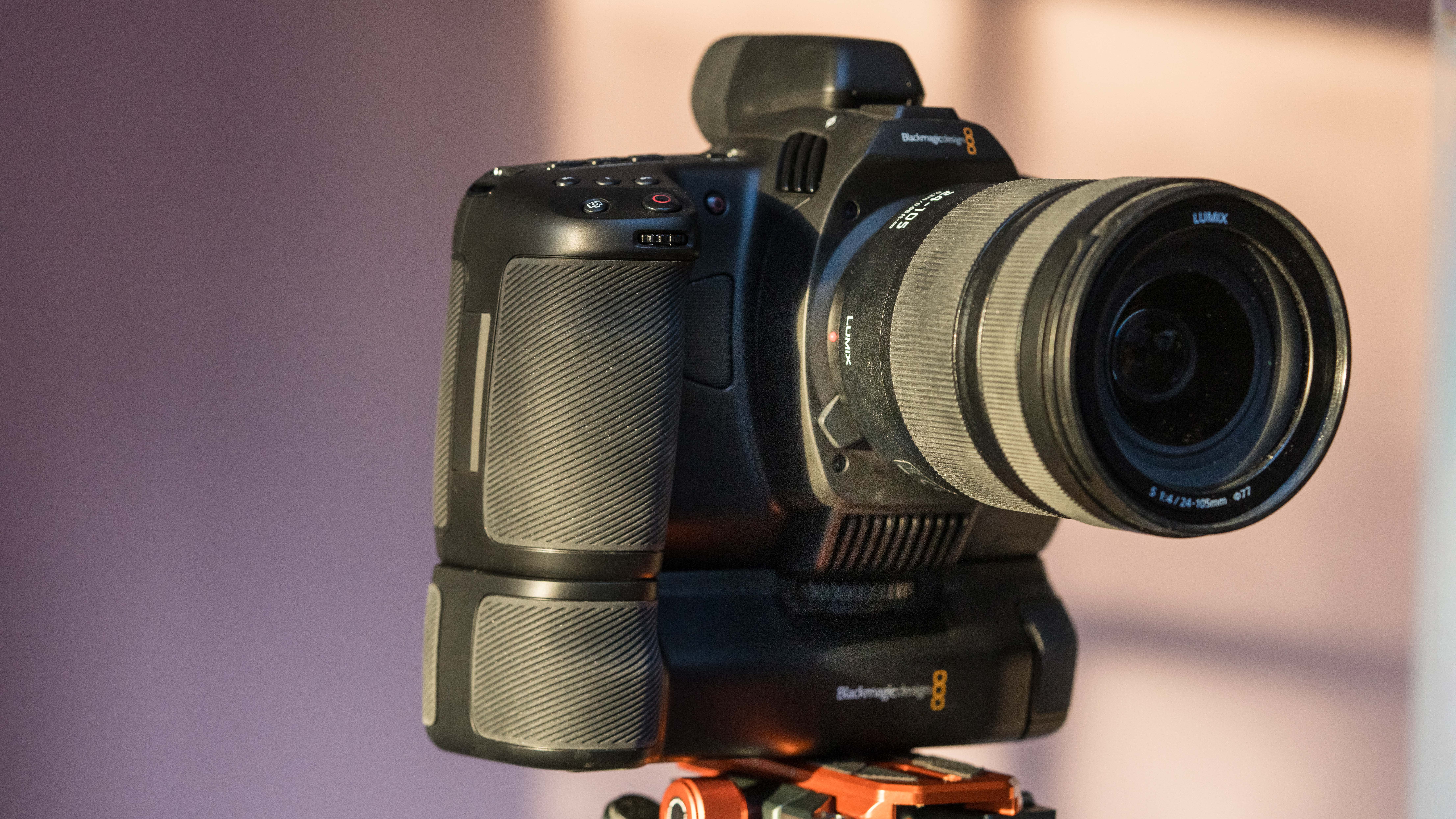
The full-frame 6K model does record a folder of low-res 1080p proxy copies of the Raw files that can be used in a quicker workflow. But you have to use the large B-Raw files for final output, so you need to transcode these in DaVinci Resolve software which means more time in front of the computer for color correcting, grading, and adding noise reduction. There is also a lot more memory used in the camera and on your hard drives, too.
Resolve usually is a standalone purchase but is industry-standard for color grading and also great for editing, too. You get a free, full Studio version of Resolve bundled with the camera to allow you to use all its high-end formats. But there is a learning curve to getting the best out of it, as it is powerful yet complicated.
The new camera has a very similar shape and size to the older 6K Pro version, including the Large, five-inch tilting rear screen, Sony-fit NP-F batteries, and the latest Blackmagic color science.
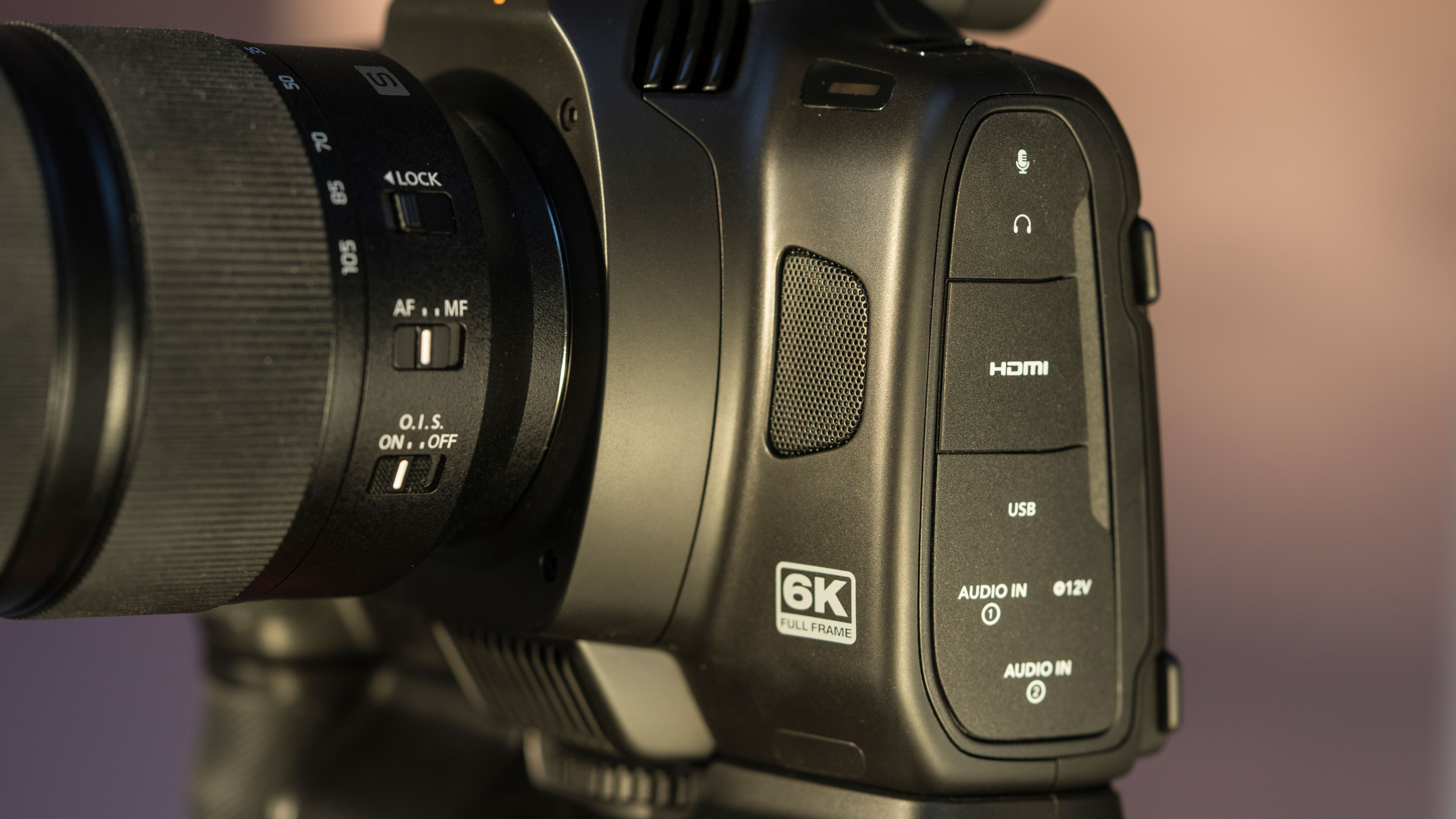
Blackmagic Pocket 6K: Specifications
Blackmagic Pocket 6K: Key Features
Blackmagic’s new 35mm CMOS sensor has dual native ISO and is the most obvious upgrade in terms of image quality and the formats the camera can shoot in. And there’s any codec you like, as long as it’s Blackmagic Raw.
The sensor shoots in 3:2 format in 12-bit Blackmagic Raw ‘open gate’ as it records from the full area of the sensor where the frame rate maxes out at 36fps. This is because the camera is largely designed to be shot in this way, and then the image is cropped in post to suit whatever size and format you need. From super-wide anamorphic to widescreen 17:9 and even 9:16 vertical for social media, all from one setting which is then cropped in post. There are lots of in-camera overlays to help monitoring.
There are other options, such as DCI 6K, DCI 4K, Super 35 4:3, and 1080 HD. But in these settings, the sensor is windowed during shooting. So as there is a crop factor to the shot, the camera doesn’t have to scan the whole sensor which means there is an increase in frame rates.

In full-frame 6K the frame rate is 36fps, in DCI 6K widescreen it’s 48fps but with a 1.06 crop. At DCI 4K it speeds up to 60fps, but there’s a 1.57x crop and in FHD 1920x1080 you can go to 120fps but there’s a huge 3.3x crop. Of course, cropping into part of the sensor means image quality and resolution are reduced.
The camera offers 13 stops of dynamic range and dual native ISO which bases at 400 and 3200, so it’s clearly a camera that likes a lot of light. As it’s all shot in Raw, there is no in-camera noise reduction so you need to add this to every shot in post.

There is also the file size issue as you will need a lot of CFexpress cards to shoot in the best quality. But the camera allows you to select different Raw compression levels from 3:1 to 12:1 if you keep the bitrate constant, or four quality levels from Q0 to Q4 for consistent quality.
The Optical Low-Pass Filter effectively combats moire but with a large sensor and not the fastest processor, there are some rolling shutter issues. One clever way of reducing this is in DaVinci Resolve which uses the camera metadata to detect skewed verticals and then correct the image for it. This works surprisingly well, but there is a small crop which is something the camera could do without. The same technology also works to reduce camera shake, which is useful use as there is no built-in image stabilization.
Resolve is also the only place to process stills from the 6K camera. There is a separate shutter release next to the main video button, which takes a full-resolution still image. This is also in Blackmagic Raw format, so they have to be opened in DaVinci Resolve and worked on like a video file. So it’s decent for a thumbnail but is a long way from stills out of a conventional mirrorless camera. This is a camera for serious video only.
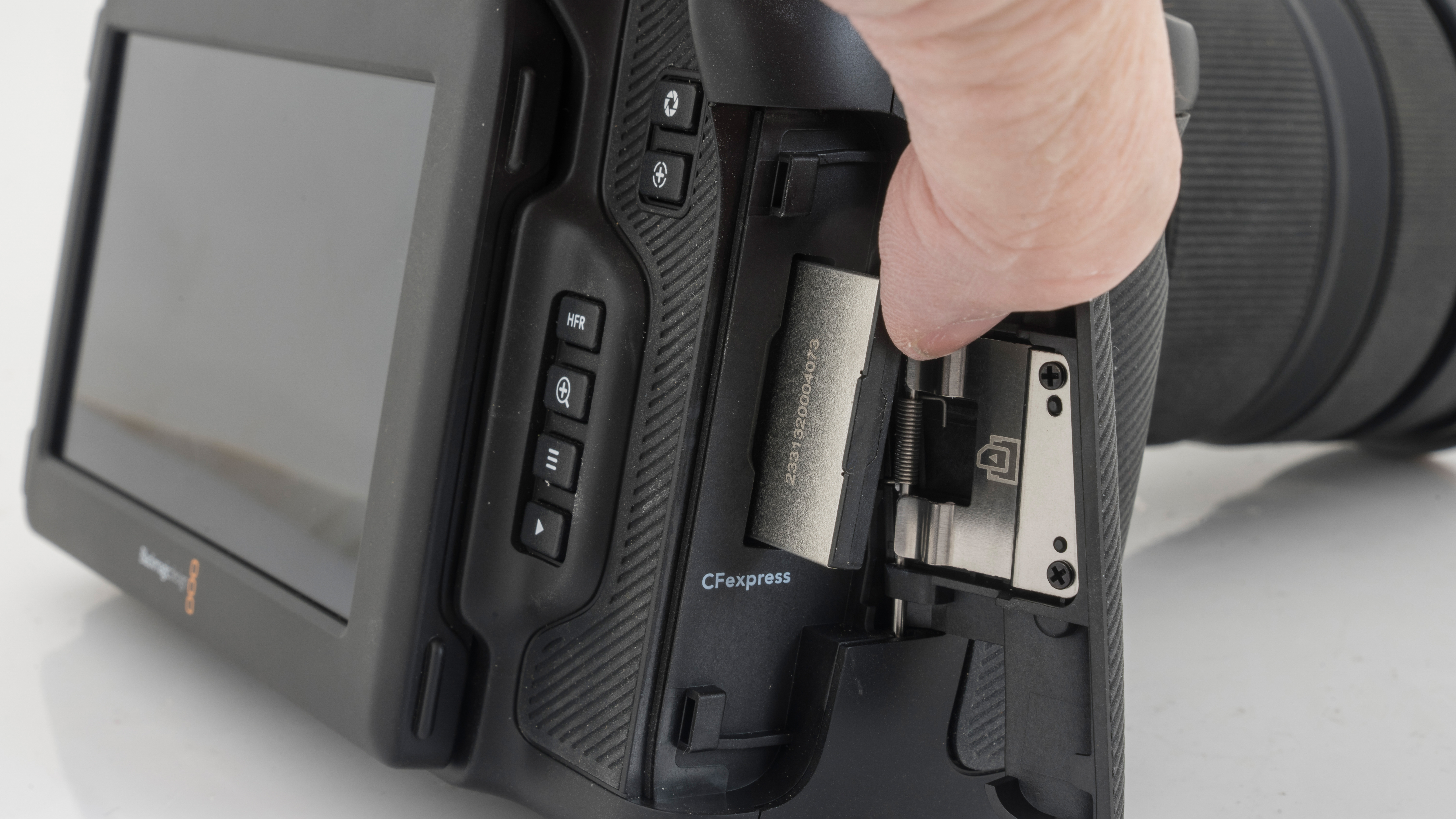
Blackmagic Pocket 6K: Design & Handling
This pumped-up camera has lots of vents to help keep the sensor cool when it’s recording 6K video Raw files, so there is never an overheating problem. Add on the optional £492 EVF and £161 battery grip and the camera is a bit of a monster, though. The EVF has a 1280 x 960-color OLED display and the unit can swivel through a 70-degree range. There is an adjustable dioptre lens as well as a choice of eyecups. These do fall off easily, though.
The battery grip screws onto the bottom plate which accepts two additional NP-F batteries. In tests, we coaxed approximately an hour of shooting and reviewing per battery.
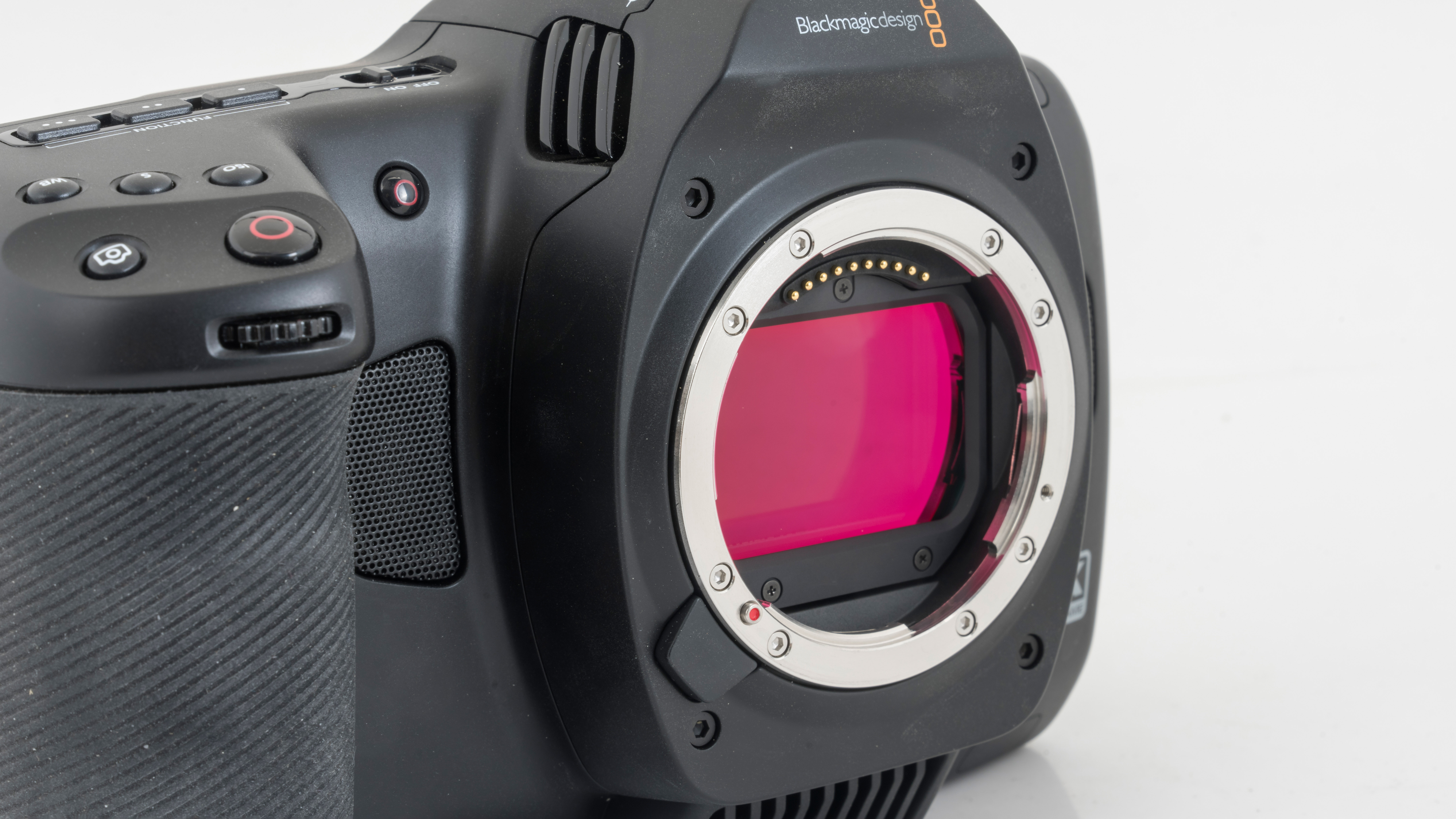
The left side of the camera has rubber covers over ports that include a headphone socket and mini XLR jacks. And there are good-quality internal mics and preamps, too, with on-screen audio monitoring. The screen tilts but does not swivel around, sadly.
On the back of the camera is an auto exposure button which gives a rough setting but isn’t particularly accurate.
There is also the autofocus button which uses the contrast-detect AF system in single-shot only that often hunts around before locking on. Not only is the AF not a clever hybrid phase-detection system but it this is old-school, one-shot AF. There is no C-AF, subject tracking, face detection, or any mod cons. You really need to focus manually, which is decent as there is a punch-in focus button to zoom feature, and the screen is big.
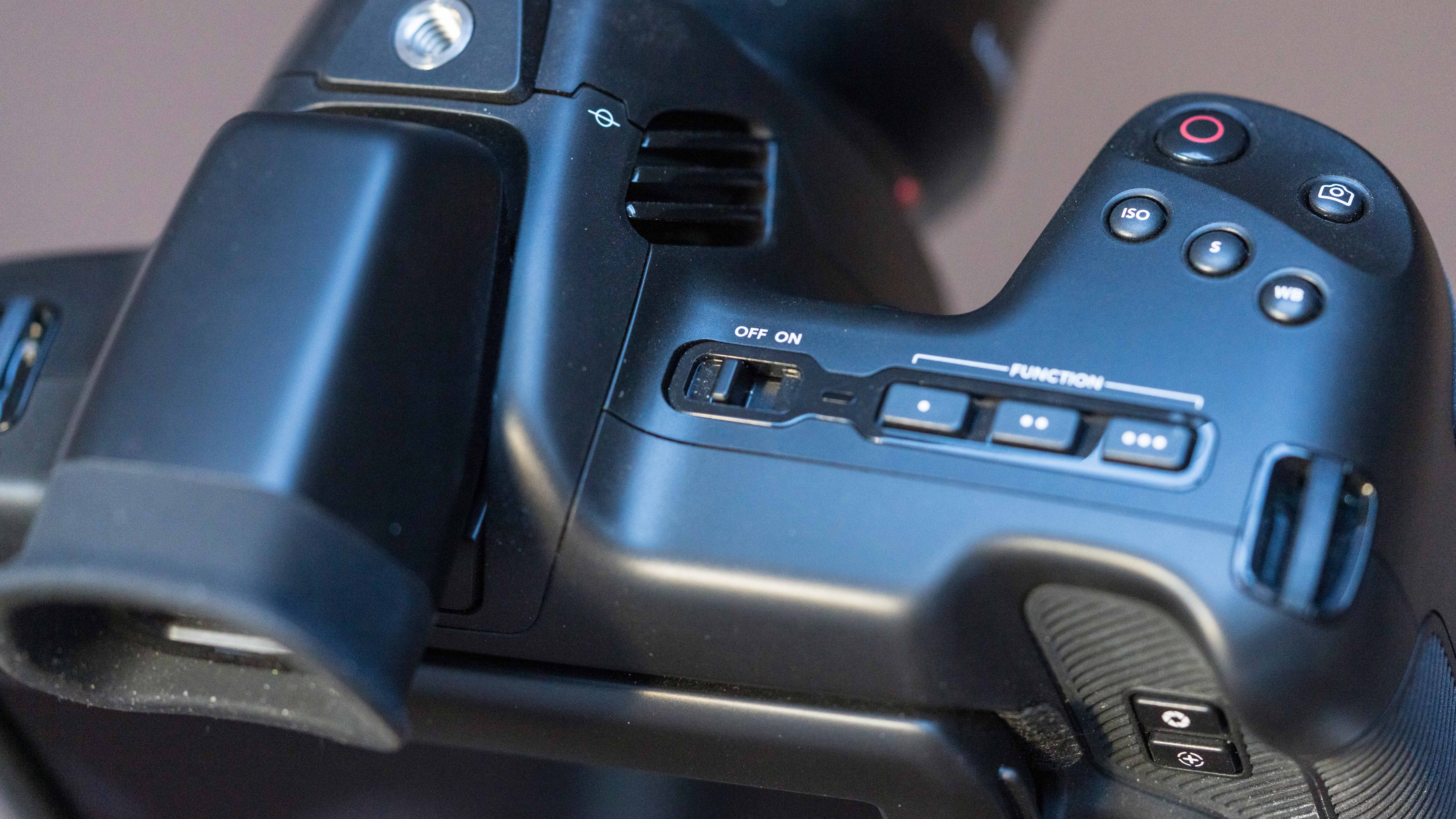
Like the Blackmagic Pocket Cinema Camera 6K Pro the new 6K full-framer has a carbon fibre composite body but it doesn’t feel premium or like it would take a significant beating.
However, the controls are well-designed with a large Rec button and an obvious control dial on the front to adjust the aperture. There are clear buttons to change ISO and white balance, and three customizable function buttons ideal for false color, effect of the display LUT, and frame guidelines.
The large touchscreen menu is clear and allows you to change settings including shutter speed or shutter angle. Once shooting, the main info is all around the outside of the screen or you can turn it off for a clear view.
Compared to cameras with built-in ND filters, you need to use a variable ND or standard ND filter in a matte box. Maybe Blackmagic will launch a full-frame 6K Pro that includes NDs, or perhaps they are too hard to squeeze in because of the large sensor.
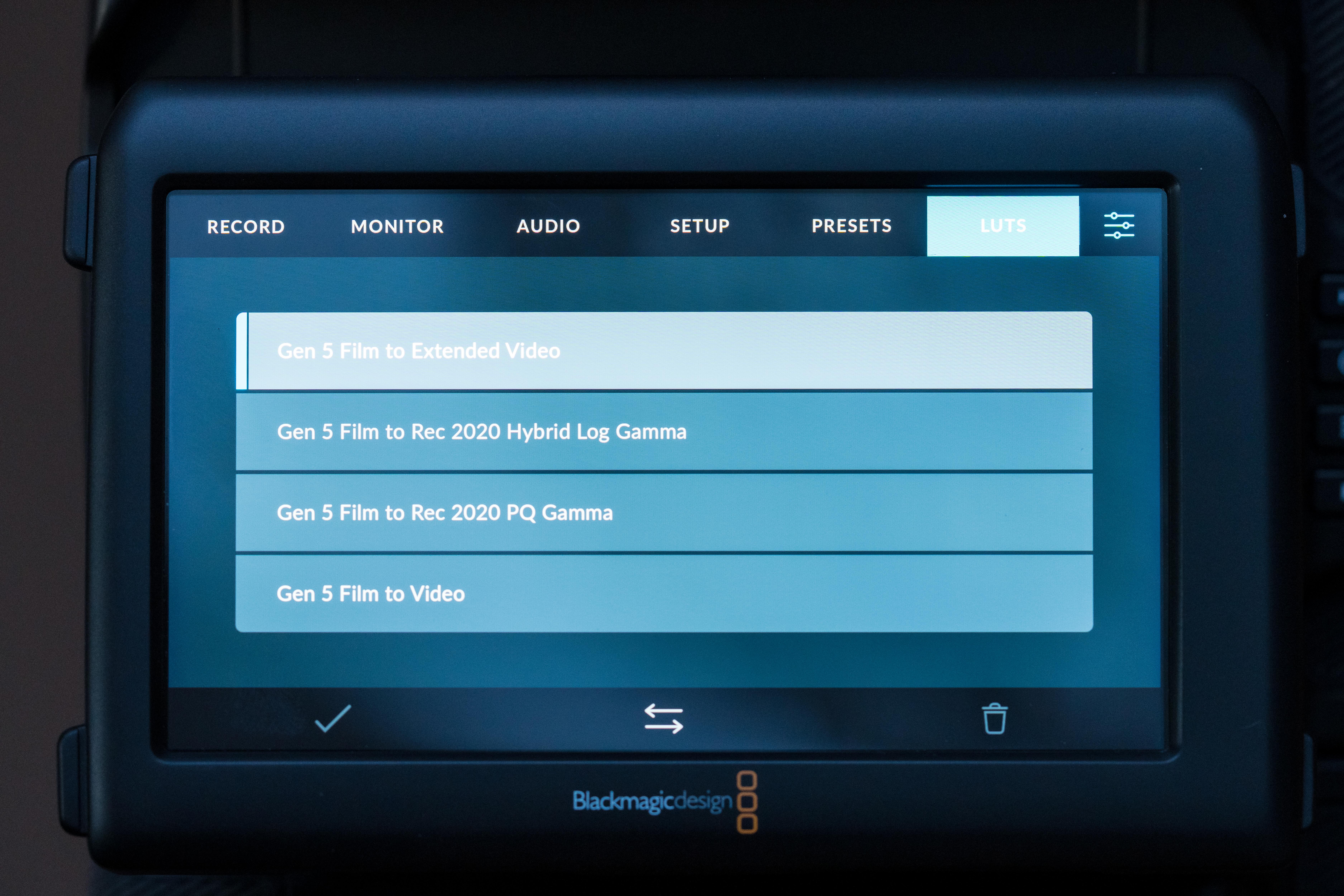
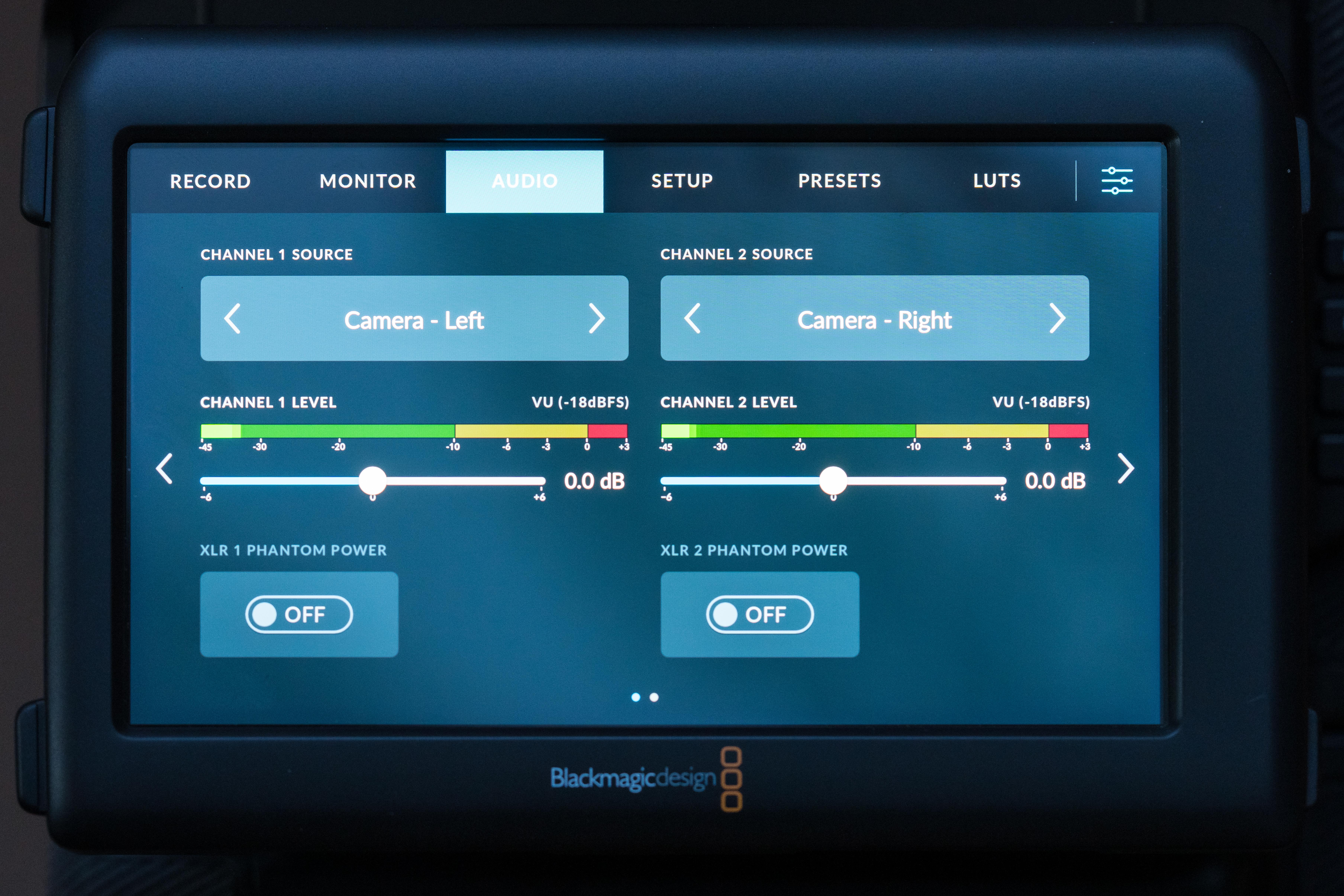
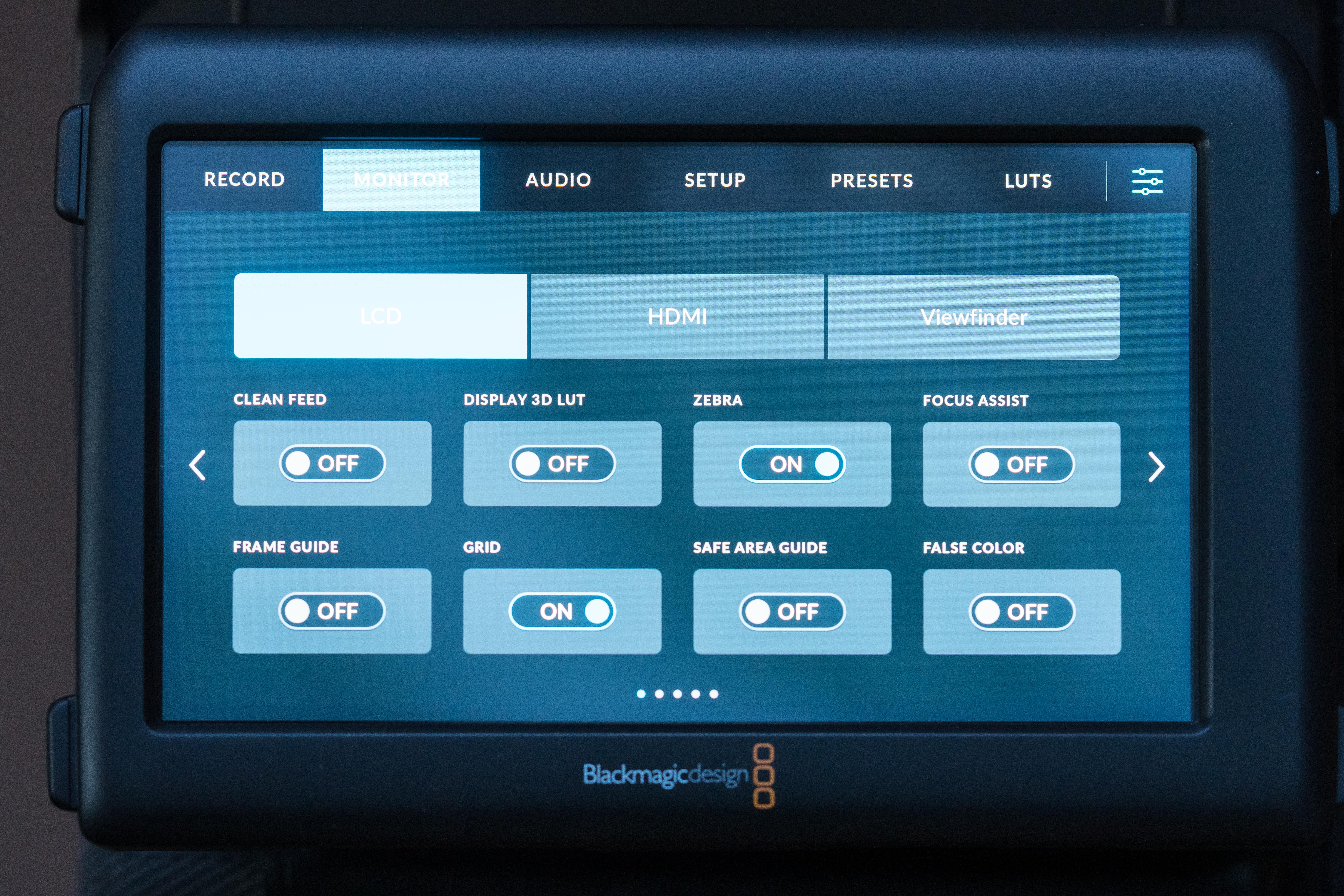
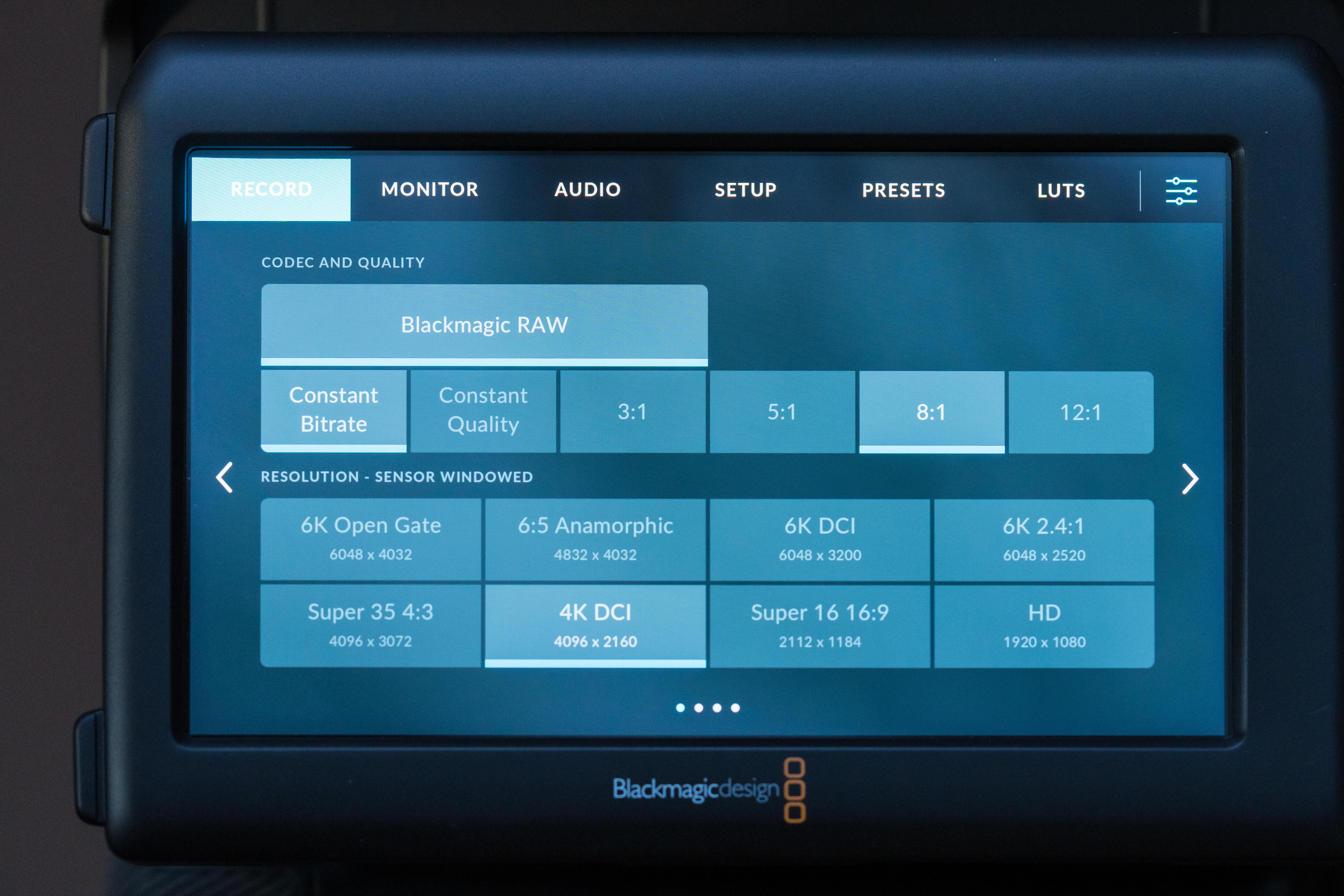
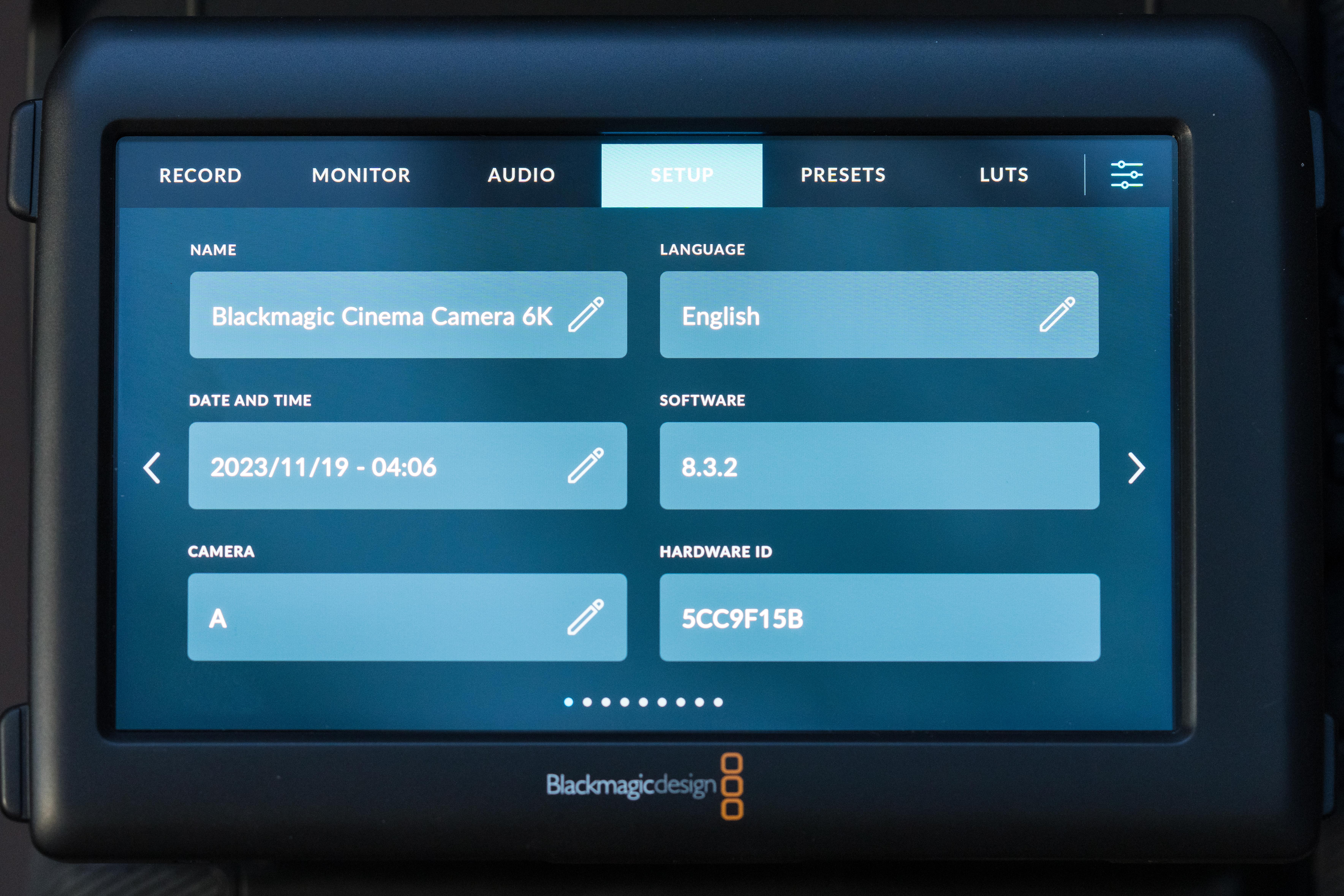
Blackmagic Pocket 6K: Performance
There is little to compare to the ultimate quality and flexibility you have when shooting Raw files. In the full 6K setting, even the most compressed files give superb results. The files are detailed and packed with colors to allow extreme grading, thanks to the Generation 5 color science. The hues are not oversaturated, even in the ‘video’ setting, which is relatively bold and punchy. The Extended Video has a wider dynamic range, and the Film setting has a more organic, filmic feel. Included LUTs can be used to normalize the monitor image while recording Log. And you can load your own LUTS, too. This ultimate control in image quality is what this camera is all about.
Yes, there are some rolling shutter issues that can be combated in Resolve, albeit with a crop. And you definitely need to add noise reduction, even at low ISO settings, as there is none applied in camera. But the ability to change white balance, push highlights and shadows, and change colors in post is a massive benefit thanks to those BRAW files.
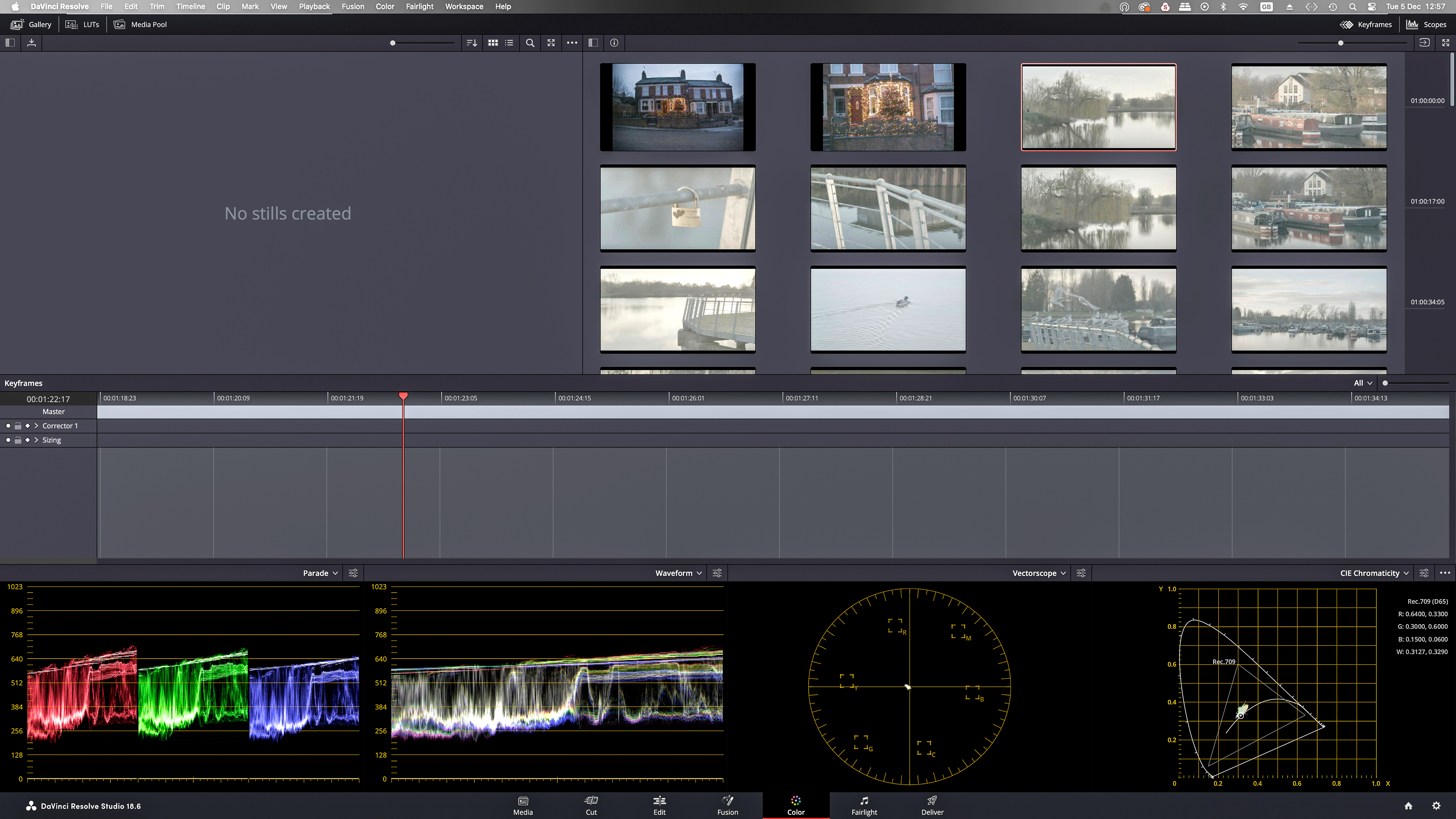
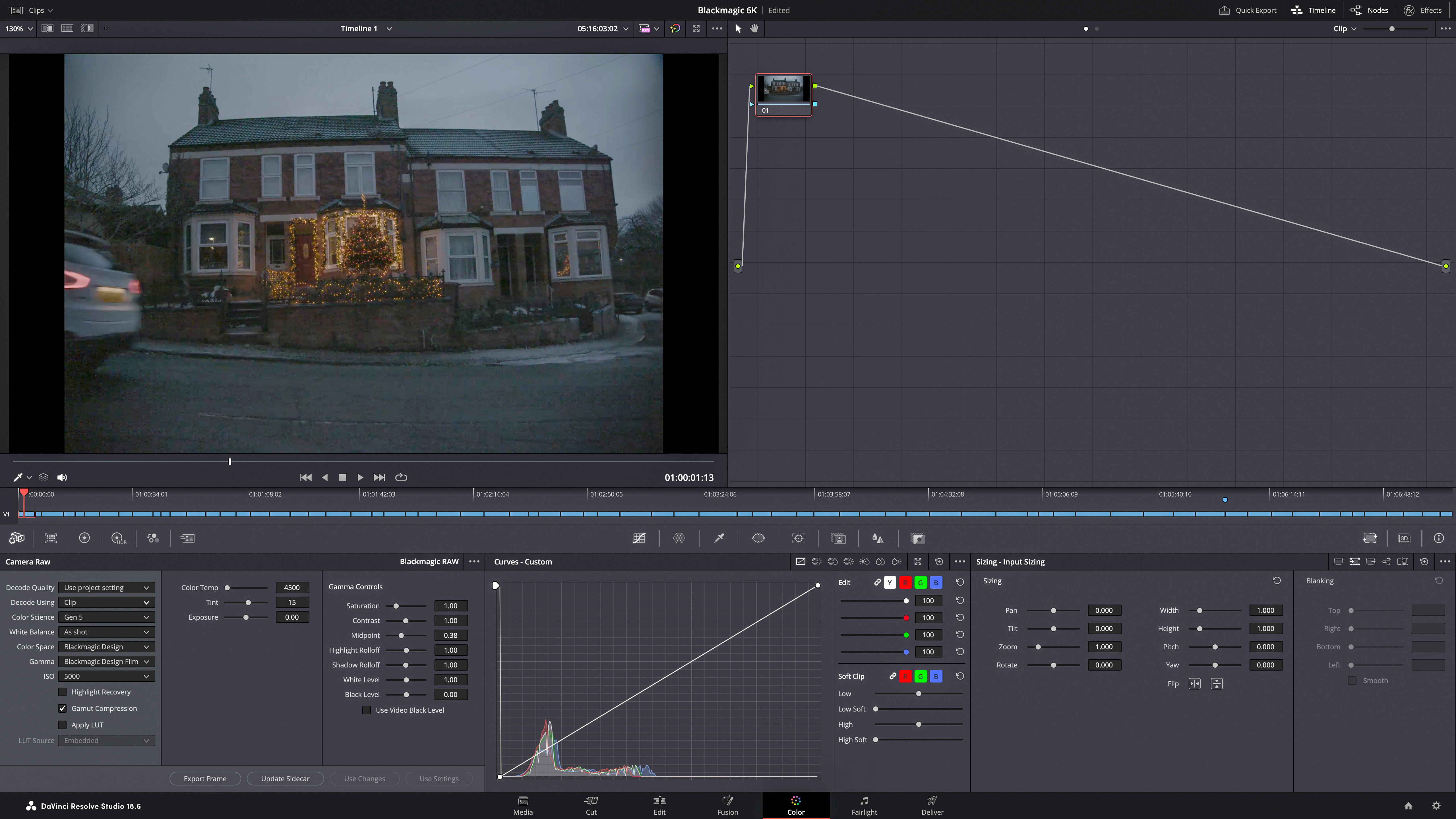
Faster frame rates look good if you don’t mind the crop. But the 3.3x crop to achieve 120fps should be considered a get-you-out-of-jail card for occasional use rather than for serious-quality filmmaking.
But to get the best out of the Blackmagic Cinema Camera 6K, you really need a decent amount of light as the sensor isn’t best at high ISO. The camera really needs to be on a tripod or motorized gimbal to take out the shakes and focus manually. The old-school AF and lack of image stabilization means it isn’t great for events or fast-paced work, either.
We found the sweet spot at DCI 4K with 5:1 compression, shot at 60p which allows for half-speed slow motion, and just put up with the 1.57x crop. Or shoot in 6K and you can crop in post anyway, but your frame rates are stuck at a maximum of 36fps.
Once you get to grips with this camera, you will be rewarded with superbly sharp and cinematic images at a price nothing else comes close to.
Blackmagic Pocket 6K: Video Sample
Blackmagic Pocket 6K: Verdict
There is much more to a camera than simply its sensor and processor pipeline to get the images onto the card. But in the case of the Blackmagic Cinema Camera 6K, the new full-frame chip and full-on BRAW workflow it allows really are at the heart of what this machine will do.
It’s about creating top-quality, wonderfully cinematic films that can be cropped and graded to taste, with a super-shallow depth-of-field if you want it.
Yes, it’s a big machine that makes it a bit awkward to use, with no built-in ND filters or fully articulating screen. The AF is poor, there are no edit-ready codecs in full resolution, the frame rates aren’t great and there’s a crop on everything except open gate 6K.
But once you work on the files in DaVinci Resolve, you can’t fail but to be impressed at the results. And considering the low price of the camera body, you will forgive it all its quirks.
If you have the talent and vision to make stunning, filmic movies, this camera will help you deliver.
